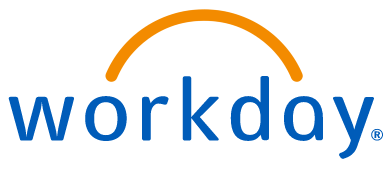Whether Instruction Is Online, Hybrid or Flex—This System Helps Schools Respond and Recover in Times of Change
Workday lets campus leaders continue business as usual, managing key processes remotely while collapsing weeks of work into a matter of minutes

Joellen Shendy spent 29 years in higher education administration, so she knows well the pain an adverse weather event can bring to a university’s on-premises operations. If a looming blizzard delayed the start of a term when she served as registrar for the University of Maryland Global Campus near Washington, DC, Shendy would have to dispatch a squad of staffers to manually change the start date of each of many thousands of course sections. “There wasn’t a way to uniformly change the date all at once,” says Shendy. “That time spent was replicated over many areas. To say it was painful doesn’t begin to cover it.”
Two years ago, Shendy joined Workday, a leading purveyor of cloud applications for finance, HR and student services, and learned that such schedule modifications could be accomplished with flexibility and speed—from any location. “I thought, ‘wait, what? That can’t be true!’” says Shendy, now the Director of Strategy for Workday Student, the company’s student information system. “My jaw just dropped.”
Shendy’s colleague Shane Topping had different IT frustrations in his previous job as Director of Admissions at Stevens Institute of Technology, in Hoboken, NJ, where he managed a significant budget and was responsible for hiring and developing talent and tracking applicant and student trends. “My daily challenge was interacting within six different systems, where data was disjointed and the best possible result was rear view mirror analytics,” says Topping, Workday’s Director of Product Marketing since 2015. He remembers one occasion when an incoming president asked him, “Where do you get your biggest bang for the buck?” All the different data required to answer that question—expenses, admissions tracking info, etc.—had to be pulled from seperate systems. It took two weeks for Topping to learn he was spending a lot of money on college fairs that were no longer resulting in many admissions. With Workday, he could have learned that on the spot. Topping says that the system lets campus leaders “bring it all together in a single view—your people, your financials and budgets and, most importantly, your student trends.”
The COVID-19 pandemic has made the advantages of Workday’s cloud applications even more striking. With their core systems of human resources, financial management and student information living in the cloud, customers have found that they can run all of their critical business operations—including payroll and employee onboarding—from any place with a secure internet connection. For Indian River State College (IRSC) in Fort Pierce, FL, Workday enabled a quick pivot and the ability to adapt in times of change. “As we moved to our employees working remotely, the Workday platform has allowed us to essentially continue business operation without any delay in service,” says Paul O’Brien, Indian River’s CIO and VP of Information Technology.

“We can talk all day about whether higher ed should embrace online or remote or hybrid or flex, etc. But in terms of the wrap-around student support, digital is here to stay because these are the types of tools students want.”
Just as critical for customers, crucial questions—about fluctuations in head count, financial aid, auxiliary income or expenditures such as athletic events, parking fees or dining services—can all be addressed in real time. For example: How many international students come from parts of the world that will make re-entry during the pandemic challenging? How does that affect scenario planning? Staff can create an easily digested dashboard containing all of that information in minutes. The result is campus leaders can understand the health of campus operations through a single lens.
“From a technical standpoint, the big difference between Workday and other systems is that we have one version of Workday that’s configurable,” says Topping. That flexibility allows the system to adapt to each institution’s unique needs. Another difference is that Workday’s community of users are speaking the same language, sharing best practices and solutions. “For example, if one institution wants to require two approvals on each student’s academic plan, they could do that. If another school wants none, they could configure that.”
Other ERP systems tend to be highly customized and somewhat rigid, which makes reacting to the moment more challenging. With the sudden switch from face-to-face to remote learning, many institutions wanted to change grading schemes from A-F to Pass/Fail. What might have involved weeks of coding with an on-premises system could be accomplished while working from a remote location within a matter of minutes on Workday.
“Most analog processes can be converted into Workday,” says Shendy. “Do you want the student to be able to request something? Does somebody need to approve something? Do you need to look at student trends? We have you covered. There’s this ability to really digitally transform. And it is very easy with Workday because there isn't somebody manning the system in some room on campus.”
More Info On How Cloud-Based Systems Support Higher Ed
The same actionable insight tools that can facilitate scenario planning and keep finances on track can be applied to student trends. Workday Prism Analytics allows universities to leverage all the Workday data already living in the same system and fold in outside data from, say, an LMS, to surface data such as: Is the student going to class? Does she get her assignments in on time? How long is the student viewing videos and how does that compare to the average for students in the same course or program? “The school can bring in these valuable pieces of data and create new insights,” says Topping. “Now the advisor, based on his security, has one place to go to see a student’s profile. He can build engagement plans to connect students to the appropriate resources, such as a tutoring center.”
Indian River has used Workday Prism Analytics to create a portrait of its students that would have been crushingly time-consuming to achieve in the past. “IRSC can now identify with an accuracy of 83%—even from week one—the likelihood of a student achieving an A/B/C grade in a semester,” says O’Brien. “We can leverage the power of that insight to reach out earlier and proactively to those students who might be at risk.”
Before students can succeed or fail in a class, they have to get into it. That’s another often painful process that Workday makes easier, which has been an especial boon since COVID-19 interrupted business as usual. Four institutions went live with Workday Student during the pandemic, completing their deployments and registration events without stepping foot on campus. At one school, where 900 rising sophomores registered for courses, a registration event that normally would have taken two weeks and required multiple levels of student support was completed in less than five minutes. Many of the support services like job aids and call centers went untapped because Workday’s user experience is intuitive and easy to navigate. “It was much ado about nothing, because the system just worked,” says Topping. And at a private school where 600 rising sophomores registered in just a few minutes, the CIO was delighted that he could see, by the second, who was registering when. Says Topping, “Now when a student calls to say he didn’t get into a course, we are backed up by data to claim, ‘Well, you were 45 seconds late!’ We have that level of insight into registration.”
“We have a mobile app that’s not just our browser experience shrunk to a small screen. It's a pleasant user experience where students can check their grades, check their academic progress, register for classes, pay a bill, . . . apply for a student job, track their time, and receive pay. They can do it all on the thing they live and breathe with—their mobile phone.”

One thing that’s driving a speedy registration is Workday’s saved schedule tool. “In Workday Student, you can make an academic plan that will help keep you on track to finish in four years,” says Shendy. “You can put together different schedules of the courses and sections you want to take, and then, come registration time you can just hit the button and it'll register you for everything.” If you didn’t get into a class because it was full, you’ll have the option right in that experience to be put on a waitlist and notified through Student when a spot opens up. If you didn’t get into a class and can’t figure out why, a troubleshooting tool in the system can clue you in: for example, that class requires a prerequisite. At one institution, 100% of students responding to a survey after a mock registration event “liked” the saved schedule functionality.
Another big piece of registration feedback from customers? Students found the Workday Student interface to be easy and intuitive. “We have a mobile app that’s not just our browser experience shrunk to a small screen. It's a pleasant user experience where students can check their grades, check their academic progress, register for classes, pay a bill,” says Topping. And because the system is unified with other Workday applications like Human Capital Management, Payroll, and Time Tracking, “students can also apply for a student job, track their time, and receive pay. They can do it all on the thing they live and breathe with—their mobile phone.”
With Workday Student, schools can engage with students throughout their journey, whether that is during initial onboarding, facilitating scheduling an appointment with an advisor for questions and planning, or automated hold resolution once a student completes a task in the system. There can be prompts along the way. Shendy adds, “There’s also the Advisory program, which I think is unique.” She explains, “Let’s say I’m a student in biology and I want to be a doctor. The school might not know that because I’m not in a pre-med track.” Shendy says Workday Student provides the school the ability to factor in that interest and then they guide a student in building her academic plan, indicating, “If you want to be a doctor, you should take these sets of biology classes, not those.”
Students want their technology interface experiences at school to be as seamless and as easy as those in other consumer environments. Both Shendy and Topping are excited by the impact of transforming the Student experience. “We can talk all day about whether higher ed should embrace online or remote or hybrid or flex, etc. But in terms of the wrap-around student support, digital is here to stay because these are the types of tools students want,” says Shendy.
This content was paid for by Workday and produced by Inside Higher Ed's sponsored content team. The editorial staff of Inside Higher Ed had no role in its preparation.


